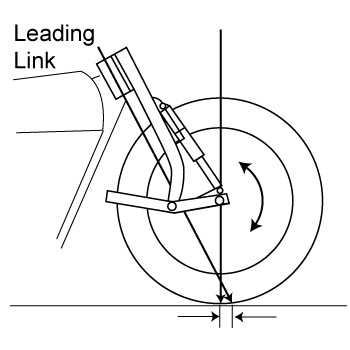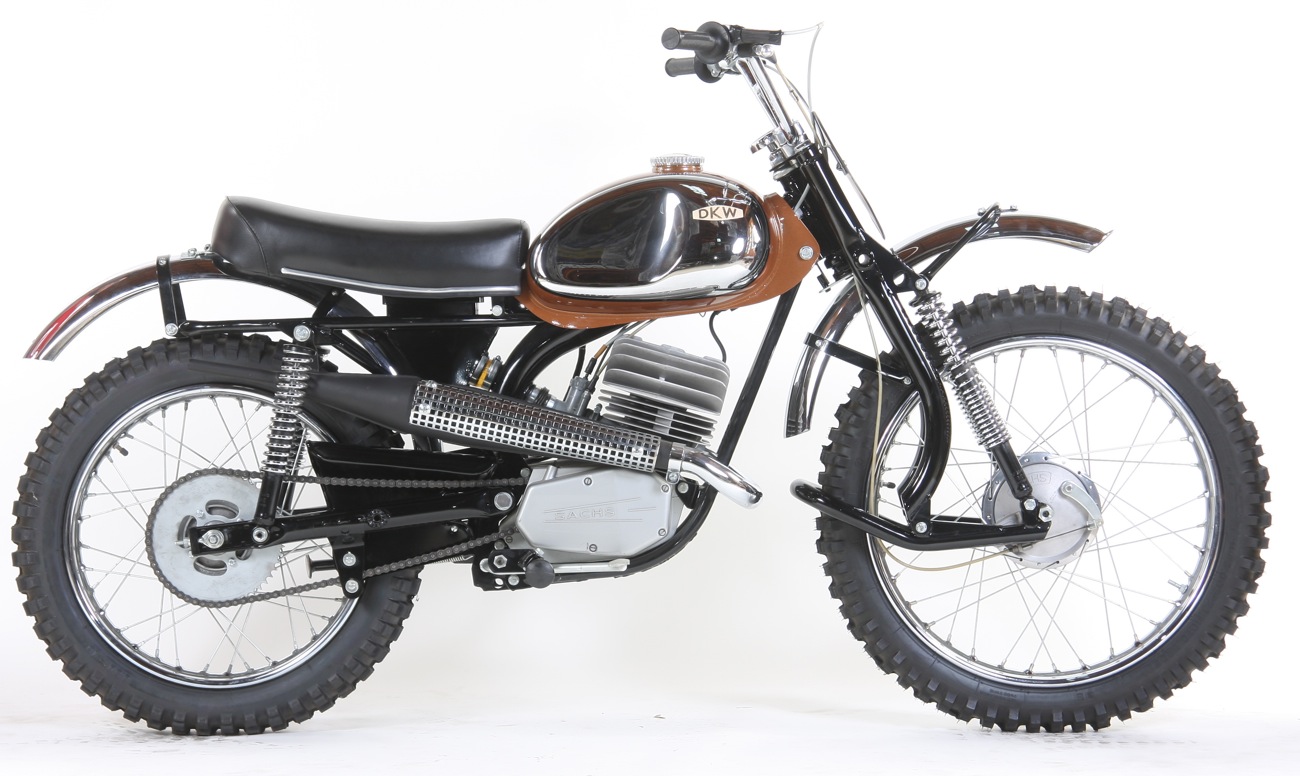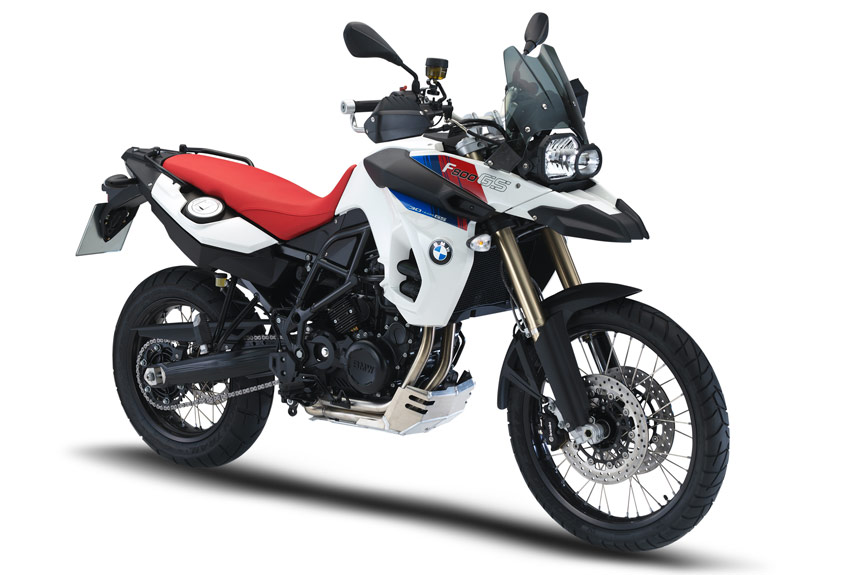The telescopic fork is being asked to do a job that physics and common sense won’t allow it to do no matter how many thousands of dollars they continue to throw at its development. It has already had millions wasted on trying to perfect it.
 Here’s the problem. – – When you ride it forward against a bump the movable part of the fork, whether it is a male or female slider, is violently shoved straight back towards the motorcycle, and only after that happens does it start to slide upward on or in its tubes that are attached to the handlebars. Therefore you have one set of tubes prying against the other set of tubes as they try to slide in or on each other. No matter what is done to make them more slippery there is no way those basic facts of mechanical action can be changed.
Here’s the problem. – – When you ride it forward against a bump the movable part of the fork, whether it is a male or female slider, is violently shoved straight back towards the motorcycle, and only after that happens does it start to slide upward on or in its tubes that are attached to the handlebars. Therefore you have one set of tubes prying against the other set of tubes as they try to slide in or on each other. No matter what is done to make them more slippery there is no way those basic facts of mechanical action can be changed.
Even though the telescopic fork looks cool and simple and the effect is not noticed much when you’re sitting still and working your beautiful smooth front fork up and down, it does not have the same effect when you’re riding the bike and run into a bump.
That is why it takes 12 or 14 inches of up-and-down travel to get a good ride over unimproved terrain with telescopic forks.
There is absolutely nothing wrong with the shock spring units being made to telescope, it is simply that they have to be attached in such a way that impacts do not hit them directly and put them in any kind of a bind.
The answer of course is to use some kind of a hinged unit that separates the impact from the shock spring unit just like on the modern car. There have been many types of hinged front suspensions used on motorcycle forks. In fact one of the first multi-cylinder motorcycles had one used on it in 1895.
In one form or another leading or trailing link suspensions, as they are called, have been used on one model or another by most motorcycle manufacturers. Up until now these link type suspensions have been slightly heavier than a telescopic fork. Now titanium can be used in their manufacture and affect a 20% weight savings, finally making them completely practical, and perhaps slightly lighter than equivalent telescopic forks. So 121 years later technology has finally caught up with the design and they are practical for top-of-the-line motorcycles.
The practical results of changing over to a leading link design are;
1. No suspension binding either on impact or braking.
2. Better and safer braking because the front of the bike doesn’t dive during braking thereby taking weight off the rear wheel.
3. A much smoother ride needing only one-half of the travel because binding doesn’t compromise shock action.
4. Much longer life out of spring shock units.
5. Because of the way the impacts are absorbed there is less stress on the frame of the motorcycle allowing for overall lighter weight and longer service life.
6. A lower seat height with way better comfort and safety. It usually only takes one good ride to make you happy you made the leading link suspension choice.
7. In essence the leading link fork has an action similar to that used on today’s supercars and they are constantly being tested at speeds of over 200 mph.
Is there a downside to using the leading link type front fork? Yes there is, you’ll have to get used to the fork looking a little bit different.
I’ve personally raced several thousands of off-highway miles on leading link front fork equipped motorcycles and I have been able to perform well above my skill level because of their forgiving nature.
Herb Uhl

